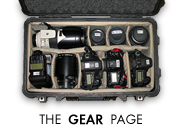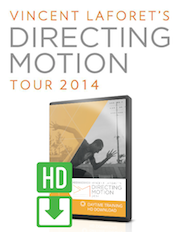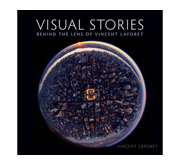Yep – one day in and to some apparently online = free
 Following yesterday’s post – I found it interesting that when I clicked on an image on Gawker.com – it led back to the Life.com / Getty Images site. The words “For personal non-commercial use only” were clearly put on the bottom of the linked image. Although I do not know if Gawker paid to use this image – I highly doubt it. If they had I’m sure that the disclaimer would not be there. hmmm…
Following yesterday’s post – I found it interesting that when I clicked on an image on Gawker.com – it led back to the Life.com / Getty Images site. The words “For personal non-commercial use only” were clearly put on the bottom of the linked image. Although I do not know if Gawker paid to use this image – I highly doubt it. If they had I’m sure that the disclaimer would not be there. hmmm…
As I mentiond – Life.com encourages the use of their images on blogs, e-mail, and social networking sites “for free.” As you can see Gawker runs ads on their pages… so clearly they are a COMMERCIAL publication as they derive revenue from those ads. They should be paying to use this image.
While the usage rights are very clearly spelled out in their terms of service – I think this goes to show how dangerous printing those words “free” can be…
To those that aren’t professional photographers out there – understand that photographers and entire agencies have been able to make a living for decades by building large collections of images and selling them to publications and splitting the profit with the photographer (those small fees add up!) When an entity decides to put their entire collection online and then encourages people to use them “for free” – they are giving up on the old revenue model – and worse making it incredibly difficult for others to compete! Then everyone wonders why agencies are no longer profitable and people (both editors and photographers) are being let go… it’s not so difficult to figure out is it?
It appears that some “unintentional” infrigement may have taken place here – but as dangerous as it is to say this: I’ve got to wonder if Life.com and Getty Images’ wording wording and marketing tactics are partly to blame. You reap what you sow. And what Life.com and Getty Images sows – we all get to reap whether we want to or not. Great…

This is the page the article links to - click to read the clear "for personal non-commercial" disclaimer...













How did Life.com/Getty manage to use the word ‘free’ without litigation?
I guess that what they’re trying to do with this is bait the blogger audience into using their paid services. Give them a free sample and hope they come back and pay for more.
It’s something that might work if bloggers who earn add revenue respect the terms of service and actually pay for the content, but it might also backfire badly if a lot of people start doing some “unintentional” infringement.
Patrick Baldwin Reply:
April 2nd, 2009 at 8:27 am
@João Pinheiro, I think their model is to get revenue from the advertising that is on this site. That is more valuable to them than actually licensing the images!
Just to throw this out for discussion….
Since you are a professional photographer and you write about photography in this blog, a reasonable person could conclude that this blog is part of your business, and hence even though you don’t actually host others’ advertisements, the blog, itself, is part of your commercial operation and hence “commercial”.
If that’s the case, is it okay that you show others’ copyrighted works without appropriate permission, as you did in the two screenshots? Just because it’s on the web doesn’t make it free, you know 😉
To be clear, I personally think it’s “fair use”, but what I personally think seems to have little sway with the courts (both legal and of public opinion). I just wanted to offer for discussion the idea that some may feel that you are crossing the same line you’re pointing at others for.
I think it is very clear that Vincent’s screen shots are fair use–they are limited duplications in the context of commentary. And it’s a stretch to suggest that the blog itself is commercial. It a bit outrageous to suggest otherwise.
On the flip side, it is fairly clear that Gawker’s use of the photo is not fair use. The photo is not being modified in any significant way, there is no commentary on the photo, and the use of the photo is to illustrate an unrelated story. Less than an inch away from the photo, Gawker is displaying advertising.
Folks might consider my previous post trolling, but do you really think that any reasonable person would consider Vincent was “crossing the line?”
Jeffrey Friedl Reply:
April 2nd, 2009 at 2:21 am
“And it’s a stretch to suggest that the blog itself is commercial. ”
This is perhaps getting too far away from Vincent’s original subject, but I don’t think it’s a stretch to consider a blog about professional photography by a professional photographer to be a part of the photographer’s commercial operation. Vincent has himself said that he has garnered business as a direct result of what he’s chosen to post here. That in itself doesn’t mean much, perhaps, but I don’t think it’s a “stretch” to consider this type of blog as commercial advertising for Vincent’s ample talents. And if that’s the case, his use of screenshots and such might be interpreted differently by copyright law.
Personally, I read his stuff because I enjoy his writing, and whether it’s “considered commercial” by others or copyright law is not relevant to me. I brought it up only as a point of discussion. (Those intimately familiar with the current status of copyright law may indeed have the same “it’s a stretch” opinion, and if that’s the case, I’d like to hear it.)
Vincent, sorry if this is straying too far off your original post.
Patrick Baldwin Reply:
April 2nd, 2009 at 8:33 am
@Sam Greenfield, I think it would be disingenuous for any professional photographer, myself included, to claim that their blog wasn’t to a greater or lesser degree commercial. I doubt that Vincent would deny that. I personally am delighted that he is blogging but one, not the only, aim of a blog is to raise that photographers presence.
Even if you leave a watermark on people will still use your “not for comeercial use” photos:
http://photoshopdisasters.blogspot.com/search/label/watermarks
Fight the good fight Vincent. I think there is much ignorance in the public over how creative licensing works, and it’s very sad that people treat it the way the do.
Another current event example is with Shepard Fairey and his stealing from an AP photo with out paying royalties. And now he’s trying to sue the AP for asking for damages. The fact that politics is involved makes people get more confused on the point that he stole an image from the internet for money making purposes. I hope that his case fails and the the AP prevails, as this case will set a president for future cases. Just because people can find something on the internet, they think they ‘own’ it, very sad.
steven Reply:
April 2nd, 2009 at 8:52 am
http://www.youtube.com/watch?v=P-56rcLxmk4
Here is a link to the artist talking nonsense with false and unsound arguments.
Neuffy Reply:
April 2nd, 2009 at 9:00 am
@steven,
My understanding was that Shepard Fairey used the image to create a derivative work.
Mannie Garcia [the photographer] claims that he owns copyright to the photo, but has no problem with the derivative work.
AP claims they own rights to the photo, and do have a problem with the derivative work.
This is a case where it seems that AP is making a rights grab against a photographer as much as an artist is using a copyrighted photo to make a derivative work.
Shepard Fairey’s lawsuit is to get the copyright issue resolved – he’s suing specifically to get a judge to rule on whether copyright has been violated or not, which would prevent further lawsuits against him. Without passing judgment on any infringement itself, this seems fairly reasonable.
steven Reply:
April 2nd, 2009 at 9:13 am
@Neuffy,
But the composition is exactly the same of one photograph.
I was not aware of the photographers opinions on the matter, thanks for sharing that info.
I’m a painter as well (non-commercial), and would be well aware of the fact of basing my composition off of one sole photograph would be illegal if I planed to use it for commercial or money making purposes. If he used 30 photographs from the internet and then derived a new composition from that, it would have been a slightly different story, IMO.
People forget that corporations are made of people too. Everyone is just trying to make a living.
Oh, derivative works based directly off a photo definitely have been shown (past precedent) to infringe upon the copyright of the original photographer. I don’t have time to look it up, but there was that Hawaiian case wherein a photo and painting of a dancer matched – perfect overlay. IIRC, the end result was that the painting could never be sold, never be displayed, etc.
In my opinion, the only thing really important in the Shepard Fairey case is who actually owns the copyright. If the photographer does, it’s a non-issue. If AP does, then they likely have a very, very good case for claiming damages.
I’d really like to see things get to a point where people just use creative commons licensed or public domain works for things like this. If it is a work under current copyright, permission must be acquired first.
One thing that I’m not entirely clear on is how to assess non-profitable use. Obviously, if profit is derived, then we can transfer said profit to the damaged party. If there is no profit, how far beyond “cease-and-desist” should we go?
It’s amazing how quickly photographers get off the initial topic to shoot the messenger! If the sight is informative to us as a group, I have no problem with Vincent incorporating it into his business plan. The same applies to Strobist, Joe McNally, Scott Kelby,and David Tejada’s sites which, by all reckoning, have been a huge resources for any photographers wishing to lighten their lighting gear load and increase their knowledge. In addition, Vincent is being very smart by adapting to the daily changing face of photography by taking on the steep learning curve of video. It is all part of finding the new facets of photography needed for survival. More power to him!
I suspect photographs/images will become the ketchup, napkins and straws of the publishing/broadcast industry… something that is part of the package but no money changes hands for their end use. Income to photographers will come at the front-end, not the back-end.
Ultimately, the issues of infringement and fair use will not be settled in the courts. There is no way every instance of violation can be handled by litigation. I assure you, as the velocity of complaints increase, issues will be settle via legislation … and that will not be good for photographers and other creatives. But, it’s going to happen.
Apparently, this “free for personal use” april fool’s joke has been lasting for too long… 1 day, exactly 🙂
Good post, I think this topic deserves more attention. While I totally understand photographers need to be paid, Getty Images does not make it easy or cost-effective to license an image. I’m sure Gawker will soon be receiving a threatening letter from Getty demanding royalty payments in excess of $1K and the immediate removal of the image.
Several years ago I ran a small niche music/social website, and one of my users uploaded what turned out to be a Getty image to their user profile. I immediately removed the image when first notified about it, but received probably 6-10 legal-looking extortion documents in the mail from Getty for months, demanding $1200 in damages or something. I wrote them one response claiming the image had been removed and no further action was necessary on my part. The letters eventually stopped after probably 6 months and they never took me to court (as the letter threatened). This sort of tactic doesn’t really make one want to license their images, does it? And how much of that $1200 would the photographer have actually received? Getty is the RIAA of photographers.
to be fair, i know Gawker has a Getty subscription so maybe it was part of their subscription package?
Wow, this is spreading like wildfire! Photographer, guard your photos. It’s only a matter of time before online truly = free.
This is going back to an old post, but in the ‘contact’ section Vincent said to post questions in the 2 most recent posts…
In your post on tips and tricks – audio for the 5d mkII you suggest recording sound independently and recommend a fostex recorder, but have you tried this on long clips? Are you aware of the sync issues with the 5d? I’ve been having these issues trying to sync to another camera (pd150).
Here’s some info: http://www.cinema5d.com/viewtopic.php?f=14&t=1174
and
http://cinema5d.com/viewtopic.php?f=32&t=600&st=0&sk=t&sd=a&hilit=14+frames+out+of+sync&sid=a43703cfe9842adea3291c451b536df0&start=10
Users are saying that the mkII actually shoots 29.97, but the metadata is incorrectly tagged 30.0 fps. You can change this with cinema tools and some people report that this fixes the sync issues (syncing to other devices.) It doesn’t for me though, and I still get significant drift when trying to sync the mkII to sound recorded on another camera.
I’m worried that if I get the fostex, I’ll have the same issue syncing to the mkII footage.
If you’ve synched up sound from another source to the mkII I’d appreciate any insight you have into this issue. Thanks
Vincent Laforet Reply:
April 16th, 2009 at 7:23 pm
@Jamie, Yes – you’re not alone. The 5D MKII DOES actually shoot at 30.0 fps (even though everything else shoots as 29.97…) Here’s an easy fix to sync the audio: change the timing of the video to 99.9% and it will match the external audio and should match other devices – see if that works – it did for me in FCP – v
Jamie Reply:
April 24th, 2009 at 1:30 pm
@Vincent Laforet, Thanks so much for answering. Do you really change the timing of every video clip to 99.9% ? This requires a complete render doesn’t it? (It did for me) I worry about the quality of the render from 30 to 29.97 in FCP.
I tried it and it didn’t work for me. The audio still drifted. However, I changed the timing of the separately recorded AUDIO to 99.9% and it synchs up perfectly. This doesn’t really make sense since it is slowing down the audio when the video is supposedly running .1% FASTER than 29.97. Unless what people are saying is true: that the mkII really does shoot at 29.97 but is incorrectly tagged in the metadata at 30.00, thus faking out FCP and FCP plays a 29.97 file in a 30fps timeline. Then slowing down the audio to 99.9% matches.
This fix (changing the audio to 99.9%) worked for both audio shot on a separate NTSC camera and recorded on a ZOOM H4n. But I really wish the fix whereby you change the frame rate metadata in Cinema tools to 29.97 worked for me. So far, I can’t get it to work. – Jamie
Vincent, Y don’t you post anymore? Is everything okay?
Nicholas Rodrigues Reply:
May 15th, 2009 at 9:17 am
@marc w., I know he’s been buried with new opportunities, plus I’m pretty sure he’s been at the NAB show.
I like this blog. My site you will like
I would see this as personal work and the end you don’t get paid to blog!!!! OR do you?
I think this sort of thing will make it much more difficult to claim damages from uses they do find to be infringements. They’ve muddied the waters on when they want to be paid for things and will have to go to the extra step of establishing what is commercial and what is reasonable.
الخدمات الأردنية
Hey Vincent, any word on when we can expect more info about The surf video?
I still get significant drift when trying to sync the mkII to sound recorded on another camera.
Hello, thank you for the information that you provide. tasarımcı
It’s amazing how quickly photographers get off the initial topic to shoot the messenger! If the sight is informative to us as a group.
Thank you for useful information. With love …
reklam ajansları
Photo copyright is the author’s life, so it should protect your photography
BSCI验厂 Reply:
July 20th, 2009 at 10:43 pm
yes
beautiful
I’ve really enjoyed making videos for webmasters. In the most recent recording session, we decided that it would be fun to talk about some of the “hidden gems” of Google: features, products, or tips that you might not know about, but you might like
I’ve been saying it since last year and the incident in Valencia with Webber and Button,
good luck!